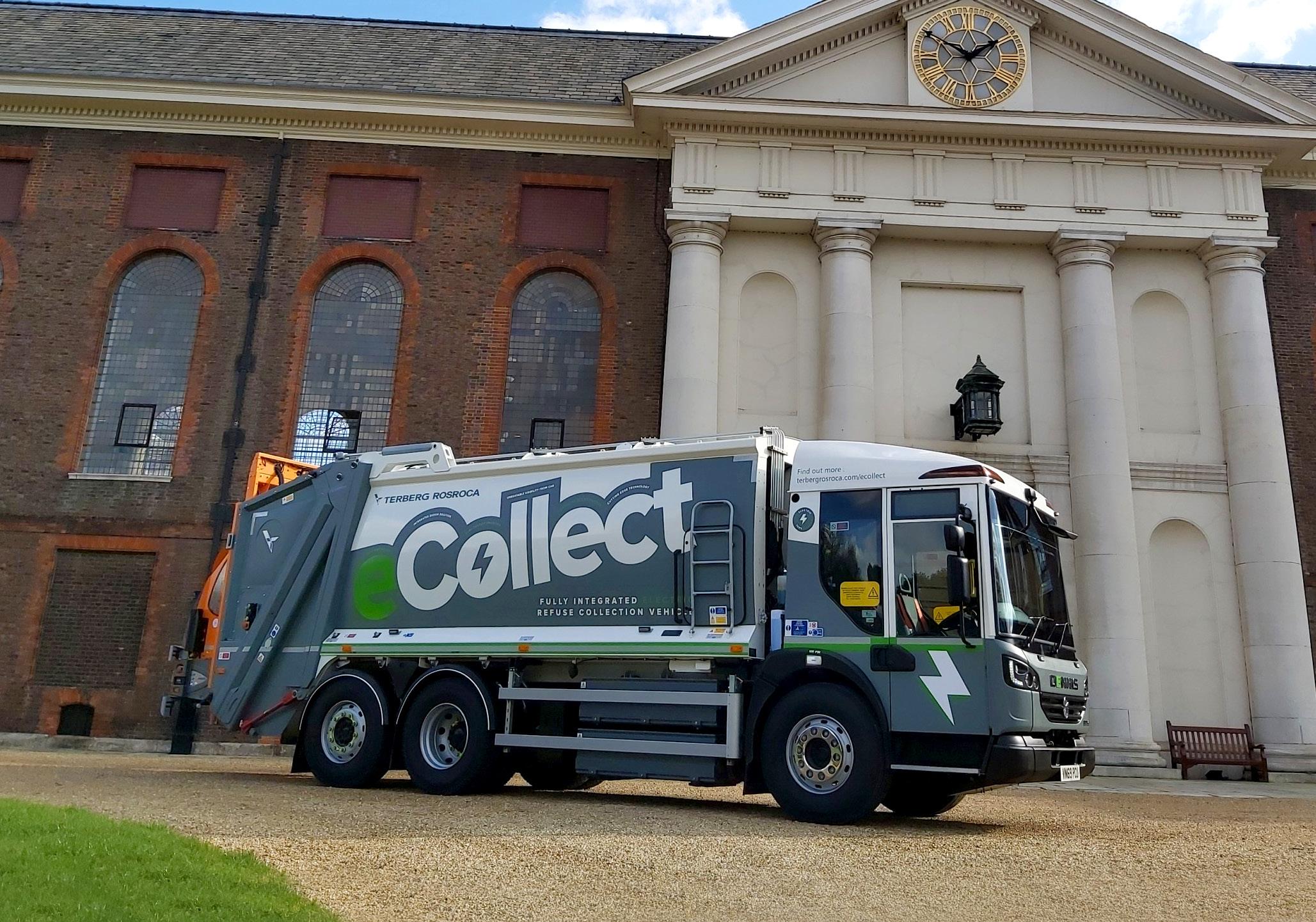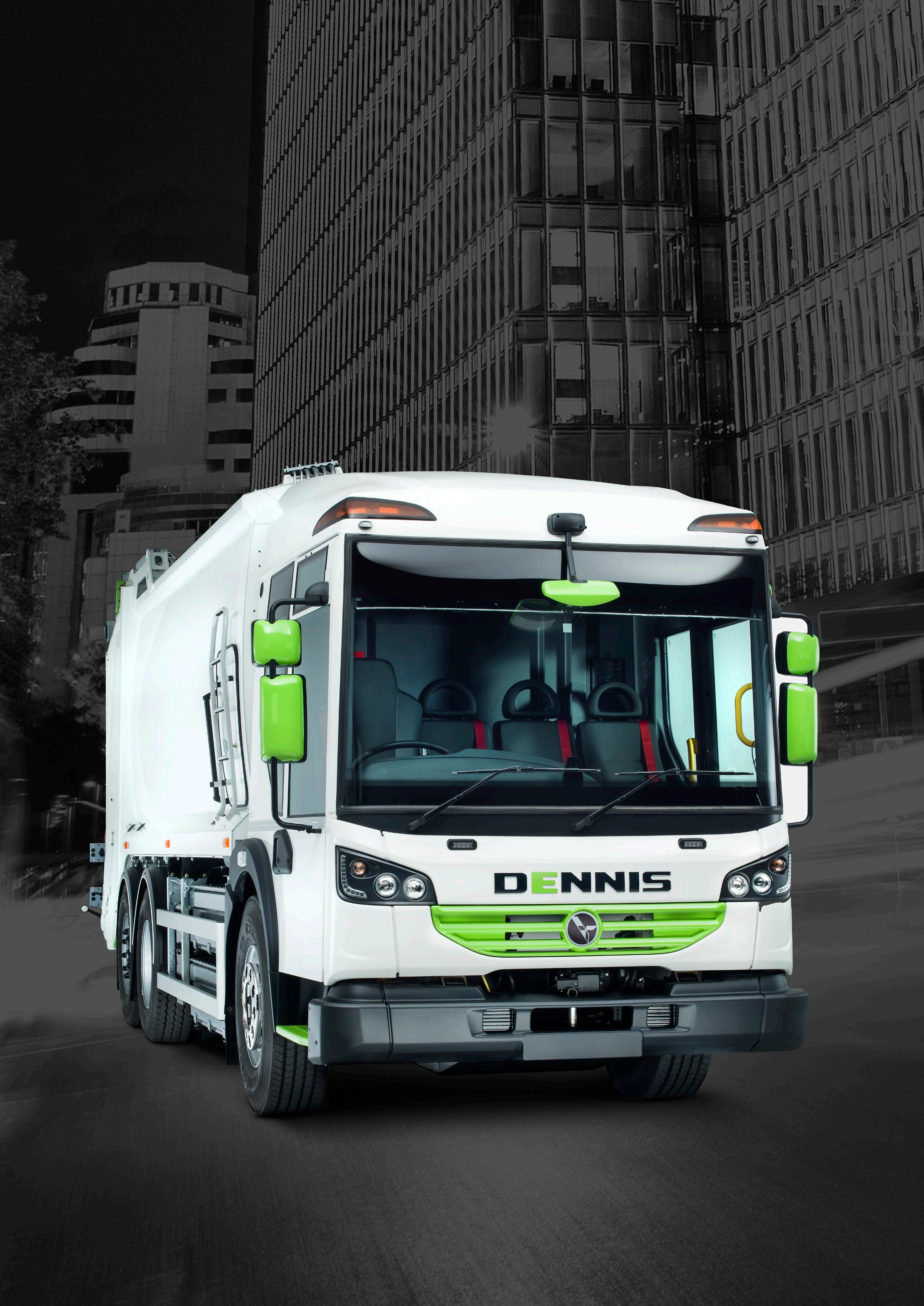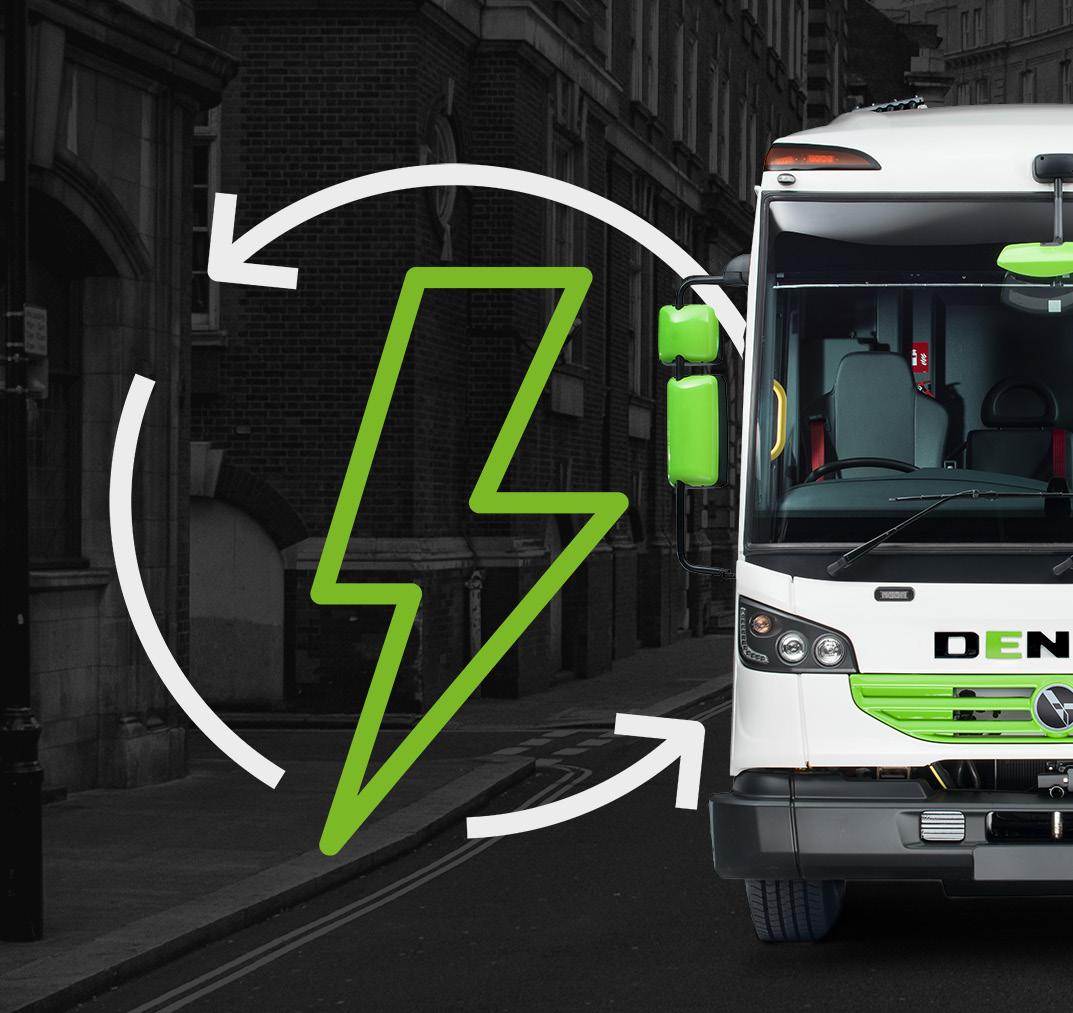
3 minute read
The seven core values of Dennis Eagle
Electrifying the waste industry
Improves air quality
Outstanding efficiency Smoother and quieter
Combats global warming


At 9.35am on 15 October 2020, the first eCollect rolled out of Pre-Delivery Inspection at Warwick and onto a low-loader before heading up the A46 towards its new home in Nottingham.
Yet the absence of a fanfare doesn’t detract from the history of the moment: a fully-integrated 27-tonne truck was born that could work all day with zero emissions.
It represents a milestone in our fight against global warming and air pollution and the dawn of a new era in waste management.
And there’s so much more to learn about the eCollect, from our key staff, from our first customers and from the eCollect itself. So read on.

Introducing the eCollect: at a glance
The eCollect has been designed and built to provide a genuine zero-emissions alternative to our best-selling RCV. This means it has to be at least as efficient, safe and cost-effective over the course of its lifetime.
The new vehicle has undergone a comprehensive range of tests and field trials to satisfy us that it meets these goals. It is also fully supported by our Aftermarket team (see page 30) and comes with our full warranty for your peace of mind. The information in these panels is based on data collected in field trials. These were conducted with customers in typical urban areas. Rounds vary with different terrain, traffic volume, the numbers of stops and other factors. But we believe these are representative of urban rounds across the UK and can act as a guide to the sort of performance you can expect.
With this data in hand, we’re happy to report the eCollect is fit for work.
Specification


- 27-tonne eRCV
- Elite Narrow 6x2 rearsteer chassis
- 19m3 Olympus Narrow body - Terberg or DE range of bin lifts - 200kW electric motor
- Five Li-NMC battery packs - Maximum charge capacity 300kWh
- Charging by CCS2 connection
The narrow vehicle was chosen for its improved manoeuvrability in tight spots, often seen in urban rounds.
Performance
Battery charge (remaining after starting at 100%)
- After double round (collecting 20 tonnes, 60-70 miles) typically 20-40%
Time saved (against a comparable diesel RCV)
- Double round (collecting 20 tonnes, 60-70 miles) typically 30-60 minutes
Exhaust emissions
- Carbon monoxide CO Zero
- Hydrocarbons HC Zero - Carbon dioxide CO₂ Zero - Nitrogen oxides NOx Zero - Particulates PM Zero
While the eCollect emits no exhaust gases, electricity generation may lead to emissions. However, it is worth noting that the National Grid has reduced its carbon emissions by 70% since 1990 and has legally binding plans to reach zero emissions.
In the third quarter of 2019, only 39% of electricity generated by National Grid came from fossil fuels. It is also possible to use solely green electricity, either by buying it through suppliers or by generating it yourself.
Charging
The eCollect battery packs should never be run to empty. Consequently, the vehicle will never be recharged from zero. These charge figures start at 15% which is the Reserve Charge level and the point where the battery charge warning is signalled to the driver.
The first figure represents a full balancing charge (usually performed overnight). The second is a quick but incomplete charge (useful if you need to use the vehicle in a hurry). Both are based on using a 50kW charger.
Time taken for Full Charge (from 15 to 100%) approximately 7-8 hours
Time taken for Quick Charge (from 15 to 70%) approximately 3.5 hours dependent on off board charging power and battery condition




